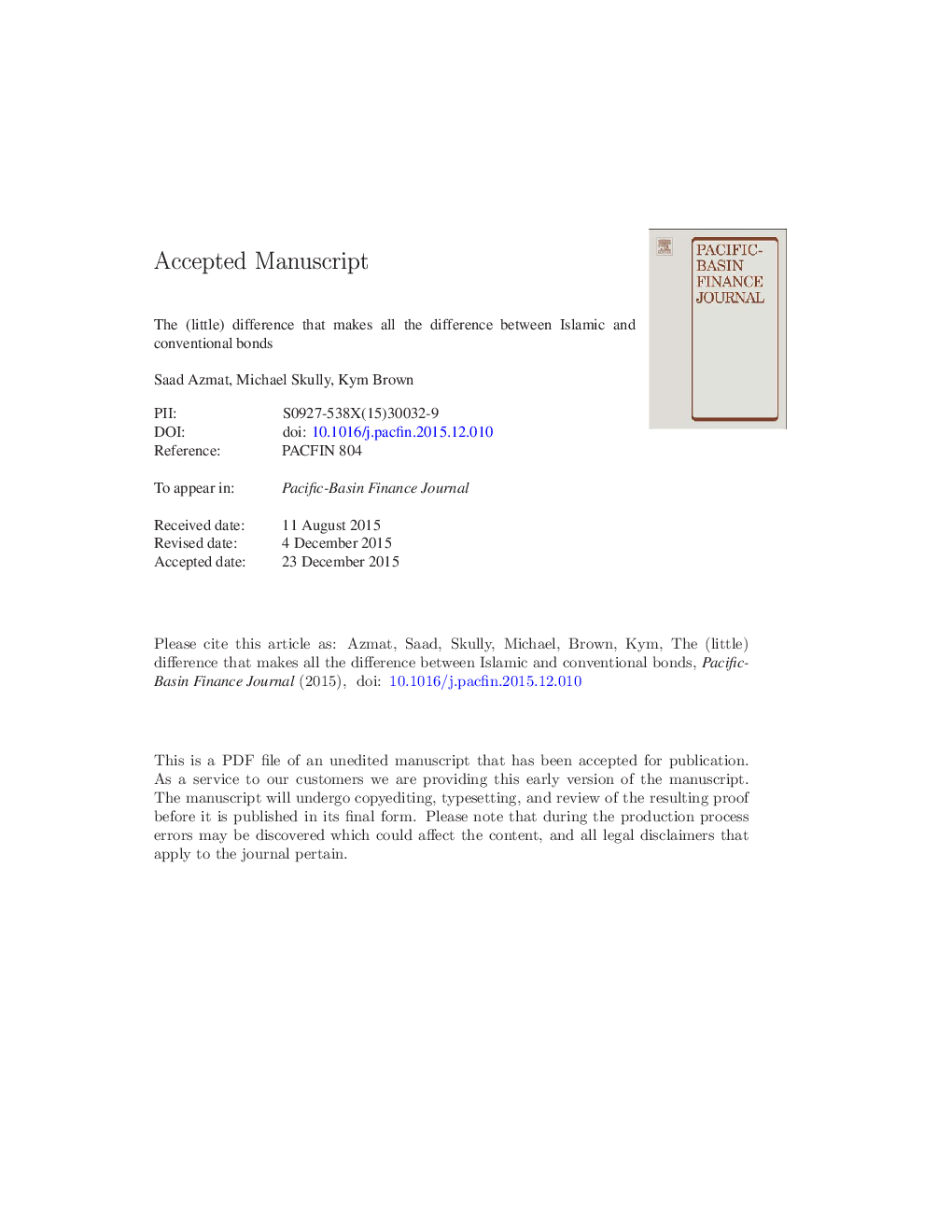| Article ID | Journal | Published Year | Pages | File Type |
|---|---|---|---|---|
| 5102332 | Pacific-Basin Finance Journal | 2017 | 50 Pages |
Abstract
This paper examines whether conventional bond ratings determinants can be similarly applied to Islamic bonds (sukuk) or if the specific Islamic features impact their credit ratings. We incorporate Islamic bond features as well as these conventional credit risk measures into the bond credit ratings model of Blume, Lim and MacKinlay (1998). We then test the model on a sample of Malaysian Islamic bonds. Our results confirm that conventional firm characteristics such as debt and size likewise drive Islamic credit ratings. Islamic bond characteristics such as the type of religious (Shariah) advisor, the regulatory changes by the Accounting and Auditing Organization for Islamic Financial Institutions (AAOIFI) and the bond issuer's industry also influence their ratings. We also find that Islamic bonds were insulated from financial shocks in the conventional financial markets in 2008.
Keywords
Related Topics
Social Sciences and Humanities
Economics, Econometrics and Finance
Economics and Econometrics
Authors
Saad Azmat, Michael Skully, Kym Brown,
